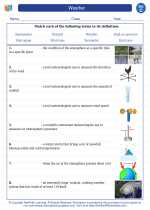Tissue Repair
Tissue repair is the process by which the body replaces damaged or dead cells. It is a critical aspect of the body's ability to heal and recover from injuries.
Types of Tissue Repair
There are two main types of tissue repair: regeneration and fibrosis.
- Regeneration: In this type of tissue repair, damaged tissues are replaced by the same type of cells, restoring the structure and function of the tissue. This process is common in tissues with high regenerative capacity, such as the skin and liver.
- Fibrosis: When the damage is extensive or the tissue lacks the ability to regenerate, fibrosis occurs. Fibrosis involves the formation of scar tissue, which is composed of collagen fibers. While scar tissue helps to fill the gap left by the damaged tissue, it does not fully restore the original structure and function.
Stages of Tissue Repair
The process of tissue repair typically involves several stages:
- Inflammation: When tissue is damaged, the body initiates an inflammatory response to clear away debris and prevent infection. Blood vessels dilate, allowing immune cells to enter the area and begin the repair process.
- Proliferation: During this stage, new cells are generated to replace the damaged ones. The body produces new blood vessels to supply the growing tissue with nutrients and oxygen.
- Remodeling: In the final stage, the newly formed tissue matures and remodels to strengthen the repair. This may involve the rearrangement of collagen fibers and the removal of excess scar tissue.
Factors Affecting Tissue Repair
Several factors can influence the outcome of tissue repair, including:
- Nutrition: Adequate intake of essential nutrients, such as protein, vitamins, and minerals, is crucial for supporting the repair process.
- Blood supply: Proper blood flow is necessary to deliver oxygen and nutrients to the repairing tissue.
- Age: The ability of tissues to repair diminishes with age, making older individuals more susceptible to prolonged healing times.
- Underlying health conditions: Chronic diseases or conditions such as diabetes can impair the body's ability to repair tissues.
Study Guide
Here are some key points to remember when studying tissue repair:
- Understand the difference between tissue regeneration and fibrosis, and the factors that determine which type of repair occurs.
- Be familiar with the stages of tissue repair: inflammation, proliferation, and remodeling.
- Identify the factors that can influence the outcome of tissue repair, such as nutrition, blood supply, age, and underlying health conditions.
- Consider real-life examples of tissue repair, such as the healing of a skin wound or the regeneration of liver tissue after injury.
By mastering the concepts of tissue repair, you will gain a deeper understanding of the body's remarkable ability to recover from damage and injury.
.◂Science Worksheets and Study Guides Third Grade. Weather
Study Guide Weather
Weather  Worksheet/Answer key
Worksheet/Answer key Weather
Weather  Worksheet/Answer key
Worksheet/Answer key Weather
Weather  Worksheet/Answer key
Worksheet/Answer key Weather
Weather  Vocabulary/Answer key
Vocabulary/Answer key Weather
Weather  Vocabulary/Answer key
Vocabulary/Answer key Weather
Weather 

 Worksheet/Answer key
Worksheet/Answer key
 Worksheet/Answer key
Worksheet/Answer key
 Worksheet/Answer key
Worksheet/Answer key
 Vocabulary/Answer key
Vocabulary/Answer key
 Vocabulary/Answer key
Vocabulary/Answer key

The resources above cover the following skills:
EARTH AND SPACE SCIENCE (NGSS)
Earth’s Systems
Students who demonstrate understanding can:
Represent data in tables and graphical displays to describe typical weather conditions expected during a particular season.